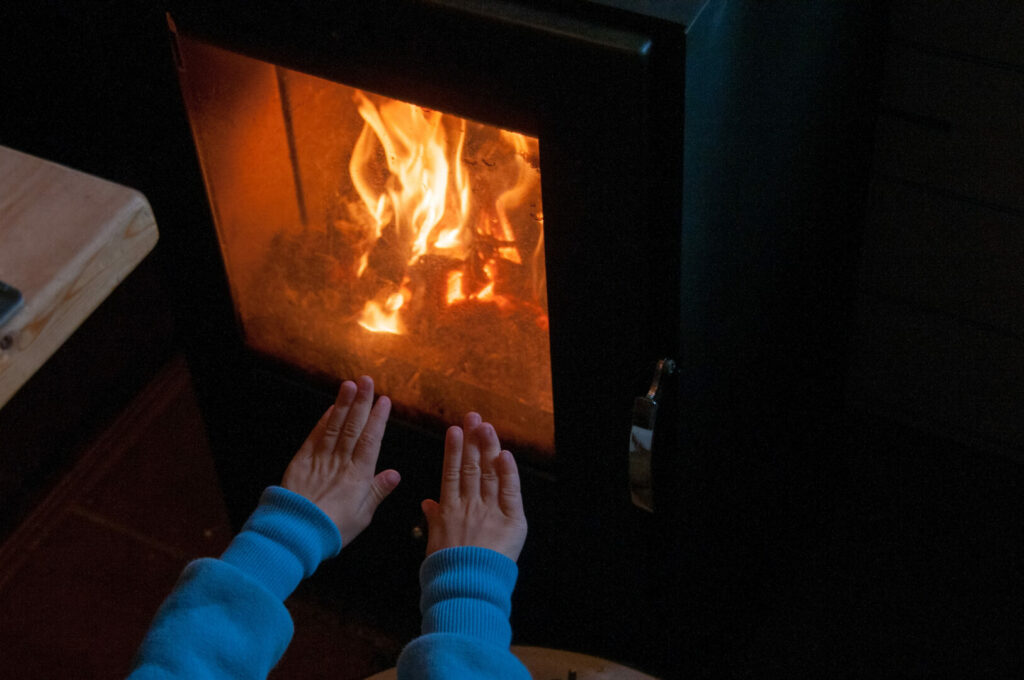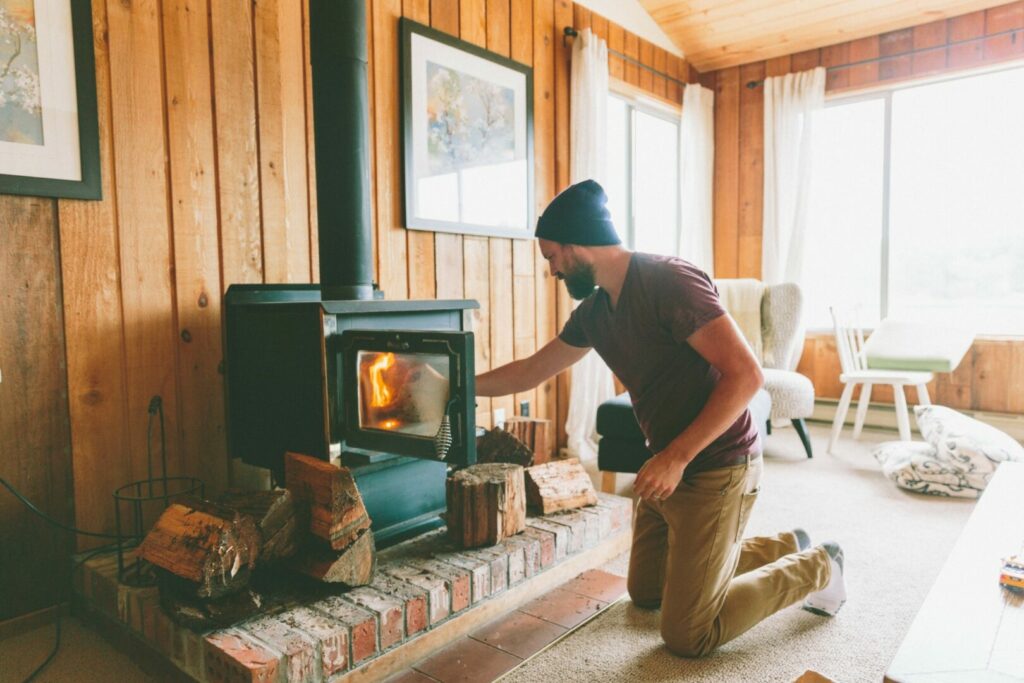Table of Contents Show
If you want to use your RV during the winter, you’ll likely consider every option for staying warm. Some owners turn to RV wood stoves to keep their rigs nice and toasty during the coldest months. If you’re considering this option, you might wonder if it is safe to have a wood stove in an RV.
We want you to stay comfortable and warm while traveling. Today, we’ll examine RV wood stoves and whether they will do the job. Let’s dive in!
Can You Put a Wood Burning Stove in an RV?
It surprises many RVers to learn that installing a wood stove in their RV is possible. However, don’t count on seeing RVs with wood-burning stoves rolling out of factories anytime soon. Manufacturers haven’t seen a huge demand for wood stoves among the masses of prospective RV owners.
Installing a wood-burning stove in your RV will likely be a DIY project. However, if you have a knack for do-it-yourself projects, you can probably tackle this one. The two most important things to remember are to secure the stove and properly seal any holes you make for the new roof exhaust.

Is It Safe to Have a Wood Stove in an RV?
An RV wood stove can be safe, assuming you have installed it correctly, keep it ventilated, and regularly maintain it. Failing to do any of these can create a dangerous situation for you and your fellow campers.
When installing your wood stove, make sure you install a heat shield and mount it away from any objects that could catch fire. Ensuring proper ventilation is essential, and you must ensure all fumes properly vent out of the chimney flue.
Always ensure your carbon monoxide and smoke detectors work, especially with a wood stove in your RV. If an issue should arise while you sleep, you want the assurance that these items will alert you as soon as possible.
Pros of an RV Wood Stove
People may have many reasons to want an RV wood stove. First, who doesn’t love the sound of a fire? The glow and crackling of the fire can provide the perfect soundtrack to put you to sleep. You may get better sleep by having one.
Another huge benefit of having a wood stove in your RV is that they require zero electricity. While many RVers worry about keeping propane in their tanks to stay warm, you can fill up your stove with any old wood lying around your campsite.
These wood stoves are very affordable and rather simple. Their design means no complex systems with many tiny parts and components that can break or malfunction.
Additionally, wood stoves create a very dry heat compared to propane and other alternatives, which means no more condensation inside your RV. If you’ve ever had to battle condensation, you know how frustrating it can be.

Cons of an RV Wood Stove
While there are many things to love about RV wood stoves, some things make using them very difficult and frustrating. One con is that it requires a pretty decent modification to your RV. It’s understandable that not every RV owner wants to cut a massive hole in the roof of their RV. If not done correctly, it could cause serious issues for you and your rig.
Wood stoves will still require some maintenance. You’ll need to regularly clean your flue from the ash and fumes that gather on it. Failing to do so regularly can cause venting issues and result in carbon monoxide entering your RV.
An RV wood stove is more physically demanding than most other heating options. You can’t continue to heat your RV when away from it, so that means returning to a cold home. You’ll need to gather firewood, start a fire, and wait for it to warm up. If you don’t get up to stoke the fire and add wood, you could wake up to a cold RV with frozen water lines.
Keep in Mind: Do you bring your own firewood while camping? You may be causing more harm than good when you use Your Own Firewood Camping

The Best Wood Stoves for Your RV
If you think an RV wood stove sounds like a great addition to your RV, we have found a few options. Here are some to consider to keep your rig warm.
Kimberly Wood Stove
It doesn’t get much better than the Kimberly if you’re looking for an RV wood stove. This stove can hold enough wood to burn for up to eight hours. This gives you enough time to sleep through the night and not worry about needing to wake up to fuel your fire.
This beast of a wood stove can heat up to 1,500 square feet, which is more than enough for most RVs. Weighing only 56 lbs, you won’t have to worry about this wood stove weighing down your rig. There’s so much to love about this wood stove, except the $4,000 price tag.
The Dwarf Wood Stove
Another great RV wood stove to consider is the Dwarf. This is a small wood stove for non-residential purposes. It’s ideal for RVs, boats, hunting cabins, yurts, and other tiny homes. The Dwarf has a sturdy body construction with 3/16 inch to 5/16 inch steel and a cast iron door, weighing 150 lbs.
You can use wood, coal, or compressed logs as your fuel source. Use the air controls to monitor the heat. And you can enjoy the view of the fire through the large glass window. If you need a small stove for a tiny space, the Dwarf wood stove is a great option at $1,095.
CUB Cubic Mini Wood Stove
If you want a budget-friendly option, consider the CUB Cubic Mini. It works great for smaller RVs under 200 square feet. Don’t expect the CUB Cubic Mini to keep you warm and toasty during the coldest months. But it will do the job during the fall and spring to extend your camping season. You can’t expect premium results from a budget-friendly wood stove.
This eco-friendly option produces minimal smoke and is easy to install and operate. This stove’s best fuel sources are well-seasoned hardwood and pressed logs. This mini stove will get anywhere from 6,000 to 14,000 BTU of heat. It costs $476.
How Do You Know If a Wood Stove Is Mobile Home Approved?
You can’t install just any wood stove in a mobile home. The U.S. Department of Housing and Urban Development (HUD) only approves certain wood stoves for mobile home use. These special wood stoves require specific air intake, clearance, and chimney systems.
If you wonder whether your wood stove is HUD-approved or not, look for a metal tag. This metal tag should be on the appliance’s rear and have the testing facility’s name. It will indicate that it is compliant with HUD Standard UM-84.
Keep in Mind: Looking to stay warm with an RV Fireplace instead? Here’s how to install them and which ones are the best
Stay Toasty with an RV Wood Stove
If you’re planning to use your RV during the winter, you’ll want a plan for staying warm. RVs have a reputation for lacking good insulation. Don’t delay installing your RV wood stove.
You may not think about battling cold temperatures currently, but weather changes before you know it. Don’t get caught unprepared with no plan for keeping your RV warm. Give yourself plenty of time so you don’t have to rush to install your new wood stove in your RV.






